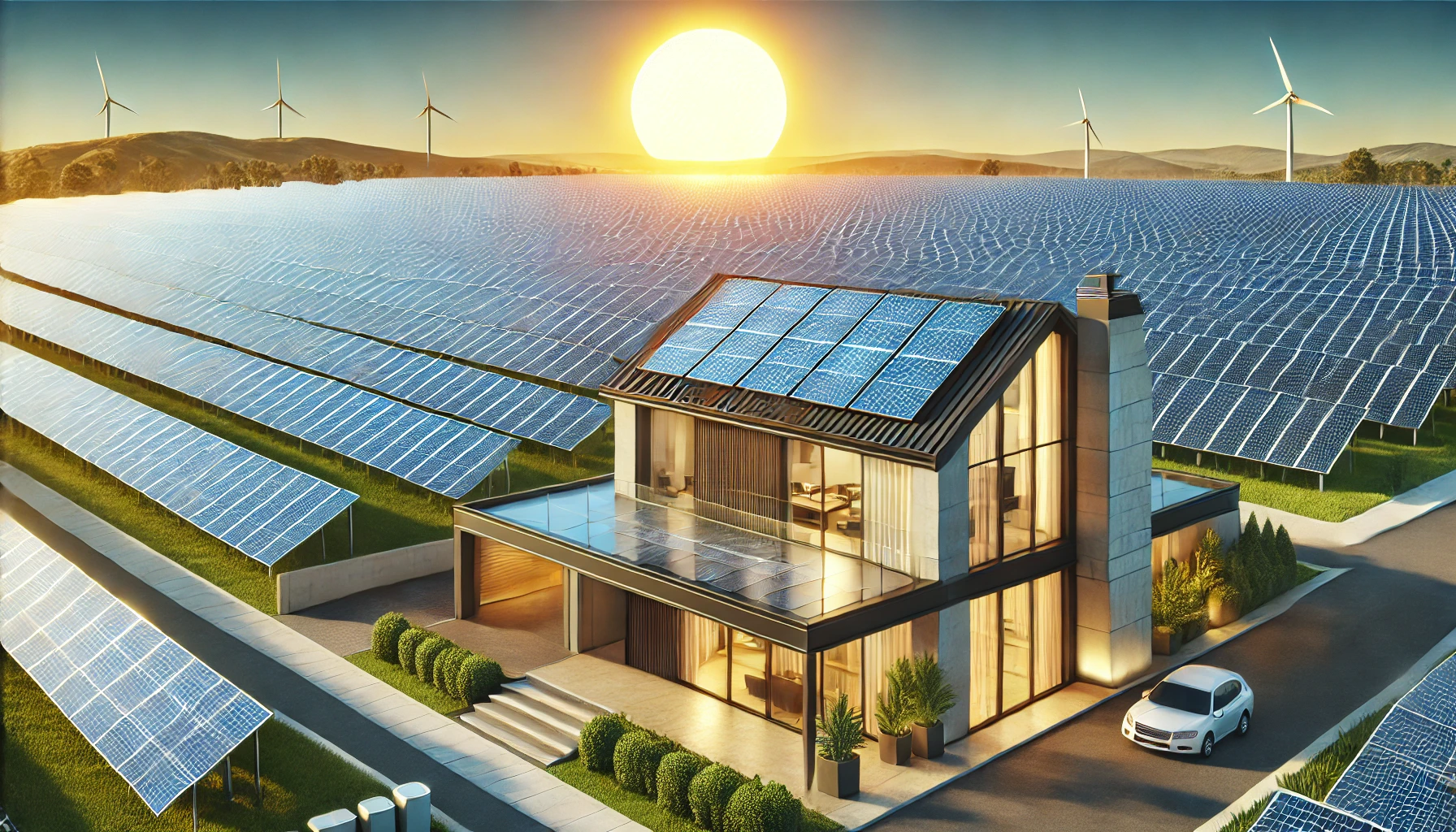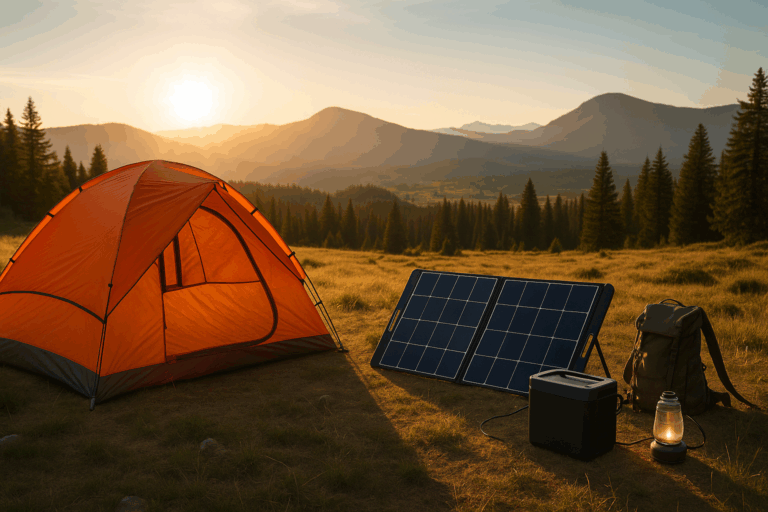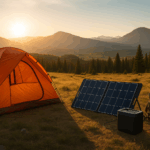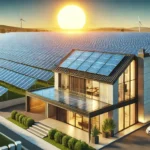Solar energy is one of the fastest-growing renewable energy sources, but how exactly do we convert sunlight into usable power?
This guide will break down the three main ways to harness solar energy:
✅ Photovoltaic (PV) Systems – Converting sunlight into electricity
✅ Concentrated Solar Power (CSP) – Using mirrors to generate heat & electricity
✅ Passive Solar Energy – Designing buildings to absorb and distribute solar heat
Let’s dive in! 🚀
1. Photovoltaic (PV) Systems – Turning Sunlight into Electricity 🔋⚡
What is Photovoltaic Energy?
Photovoltaic (PV) systems use solar panels to convert sunlight directly into electricity. These systems are found on rooftops, solar farms, and even in space! 🚀
When sunlight hits solar cells (usually made of silicon), it excites electrons, generating an electric current known as direct current (DC). This is then converted into alternating current (AC) by an inverter, making it usable for homes and businesses. 🏡
🔹 Key Components of a PV System:
- 🔆 Solar Panels: Capture sunlight and convert it into DC electricity.
- ⚡ Inverter: Converts DC power into AC power for household use.
- 🔋 Battery Storage (Optional): Stores extra energy for nighttime or cloudy days.
- 📊 Charge Controller: Prevents batteries from overcharging.
Types of Solar Panels:
- 🔵 Monocrystalline Panels – Most efficient, but expensive.
- 🔷 Polycrystalline Panels – Budget-friendly, slightly less efficient.
- 🎗 Thin-Film Solar Panels – Lightweight and flexible for unique applications.
✅ Pros of PV Systems
✔️ Renewable & eco-friendly
✔️ Reduces electricity bills 💰
✔️ Works in various climates 🌍
❌ Cons of PV Systems
❌ Requires sunlight (less efficient on cloudy days)
❌ Upfront cost can be high 💲
❌ Takes up space (especially for large systems)
2. Concentrated Solar Power (CSP) – Using Mirrors to Generate Energy 🔥☀️
What is CSP?
Instead of using solar panels, CSP systems use mirrors to concentrate sunlight onto a receiver. This generates heat, which produces steam to drive a turbine and generate electricity. 🚂⚡
🔹 Types of CSP Systems:
- 🌄 Parabolic Troughs – Curved mirrors focus sunlight onto a heat-absorbing tube.
- 🏗️ Solar Power Towers – Mirrors reflect sunlight onto a central tower, heating molten salt.
- 🎯 Dish Stirling Systems – A parabolic dish concentrates sunlight onto a receiver with a Stirling engine.
- 🏭 Linear Fresnel Reflectors – Flat mirrors focus light onto tubes, similar to parabolic troughs but cheaper.
✅ Pros of CSP
✔️ Can store energy as heat for nighttime use 🌙
✔️ More efficient than PV for large-scale solar farms 🏭
✔️ Great for desert areas with abundant sunlight 🏜️
❌ Cons of CSP
❌ Requires a LOT of space
❌ More expensive than PV systems 💲
❌ Only works well in very sunny areas (e.g., deserts)
3. Passive Solar Energy – Harnessing the Sun Naturally 🌞🏡
What is Passive Solar Energy?
Instead of using panels or mirrors, passive solar design optimizes homes and buildings to naturally capture, store, and distribute heat.
This method is commonly used in home heating, cooling, and lighting without mechanical systems. 🏡
🔹 How Passive Solar Energy Works:
- 🪟 South-Facing Windows: Capture sunlight for natural heating.
- 🧱 Thermal Mass (Brick, Concrete, Water): Absorbs heat during the day & releases it at night.
- 🌿 Natural Ventilation: Uses air circulation to regulate temperature.
- 🏠 Reflective Roofing & Shading Devices: Helps cool buildings in hot climates.
✅ Pros of Passive Solar
✔️ Zero energy cost (since it’s built into design) 💰
✔️ Lower heating & cooling bills
✔️ Sustainable & eco-friendly 🌿
❌ Cons of Passive Solar
❌ Only works well if designed properly
❌ Hard to modify existing buildings
🔎 Which Solar Energy Method is Right for You?
Each solar energy method serves different needs:
🏠 Homeowners & Businesses: PV systems are the best choice.
🏭 Large-Scale Energy Production: CSP systems work best.
🏡 Energy-Efficient Building Design: Passive solar is ideal.
🌞 No matter which method is used, solar energy is the future of clean, renewable power! 🚀
💡 FAQ: Frequently Asked Questions About Solar Energy
Q: How long do solar panels last?
✅ Most solar panels last 25-30 years with proper maintenance.
Q: Can solar panels work on cloudy days?
✅ Yes, but efficiency drops by 10-25% depending on cloud cover.
Q: How much do solar panels cost?
✅ The average U.S. home solar installation costs $15,000 – $25,000 before incentives.
Q: Do I need a battery with solar panels?
✅ Not necessarily, but a battery allows energy storage for nighttime use.
🚀 Get Started with Solar Energy Today!
If you’re considering switching to solar power, now is the best time! 🌞
✅ Research incentives & rebates in your area 💰
✅ Choose the right solar system for your needs
✅ Contact a solar provider for a free consultation
🌍💡 The future is solar-powered – are you ready? 🚀⚡







